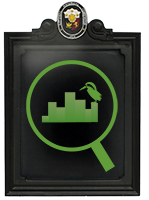 Parish Church of San Ildefonso de Toledo of Tanay | Church of Tanay Marker
Parish Church of San Ildefonso de Toledo of Tanay | Church of Tanay MarkerParish Church of San Ildefonso de Toledo of Tanay | Church of Tanay Marker is a National Cultural Treasure, National Museum; Marked Structure, NHCP; Registered Property, Municipality of Tanay, Rizal located at Tanay, Rizal, Region IV-A.
Located in the heart of the town proper, San Ildefonso Church, also known as Tanay Church, is one of Jubilee Churches in the Philippines. It was declared one of the 26 Heritage Churches in the country by the National Commission for Culture and the Arts on July 31, 2001, due to its age and the centuries-old religious artifacts that it houses.
______
One of the most historical spots in the town is the Tanay Church built in the 17th century. The construction of the stone church was completed in 1680 but by 1773 it had deteriorated. The church had to be demolished and rebuilt with good local stone made of Tanay quarry. The strong and solid structure standing today was completed in 1783 with slight restoration. The Church is a mixture of Philippine colonial design and with some integration of baroque in the facade which has two layers of columns. The main entrance is flanked by lateral niches and the side portal has elaborate designs. The interior of the church has a long nave. It has five altars with rococo designs. The main altar is silver-plated. The stations of the cross are made of wood relief sculptures which are beautifully done. Above the choir loft is a stained glass window.
_____
Marker Text:
Church of Tanay
The ecclesiastical administration of Tanay belonged to Pililla up to 1606 when the first church was built. The town moved to San Antonio in 1620 but was transferred to this site in 1640. The present Church was completed in 1783.
Year Unveiled: 1939
_____
The style of the church, with its triangular pediment and rounded belfry, leans toward Baroque architecture. The church also houses a relic of a piece of bone of San Ildefonso housed in a monstrance, given by Rev. Fr. Felipe Pedraja on October 2006 from Zamora, Spain in which the body of the patron saint lies.
The 14 Stations of the Cross inside the church is considered as one of the most beautiful Stations of the Cross in Asia. The carvings are depicted to have Malay features as evidenced by the brown skin of the natives and their squat figures, all of which are believed to have created by native Tanay artists. Some distinct depictions are borrowed from the native culture such as the "Tambuli" made of carabao and the bolo instead of the typical Roman sword. The carvings are encased in large glass windows across each side of the church.